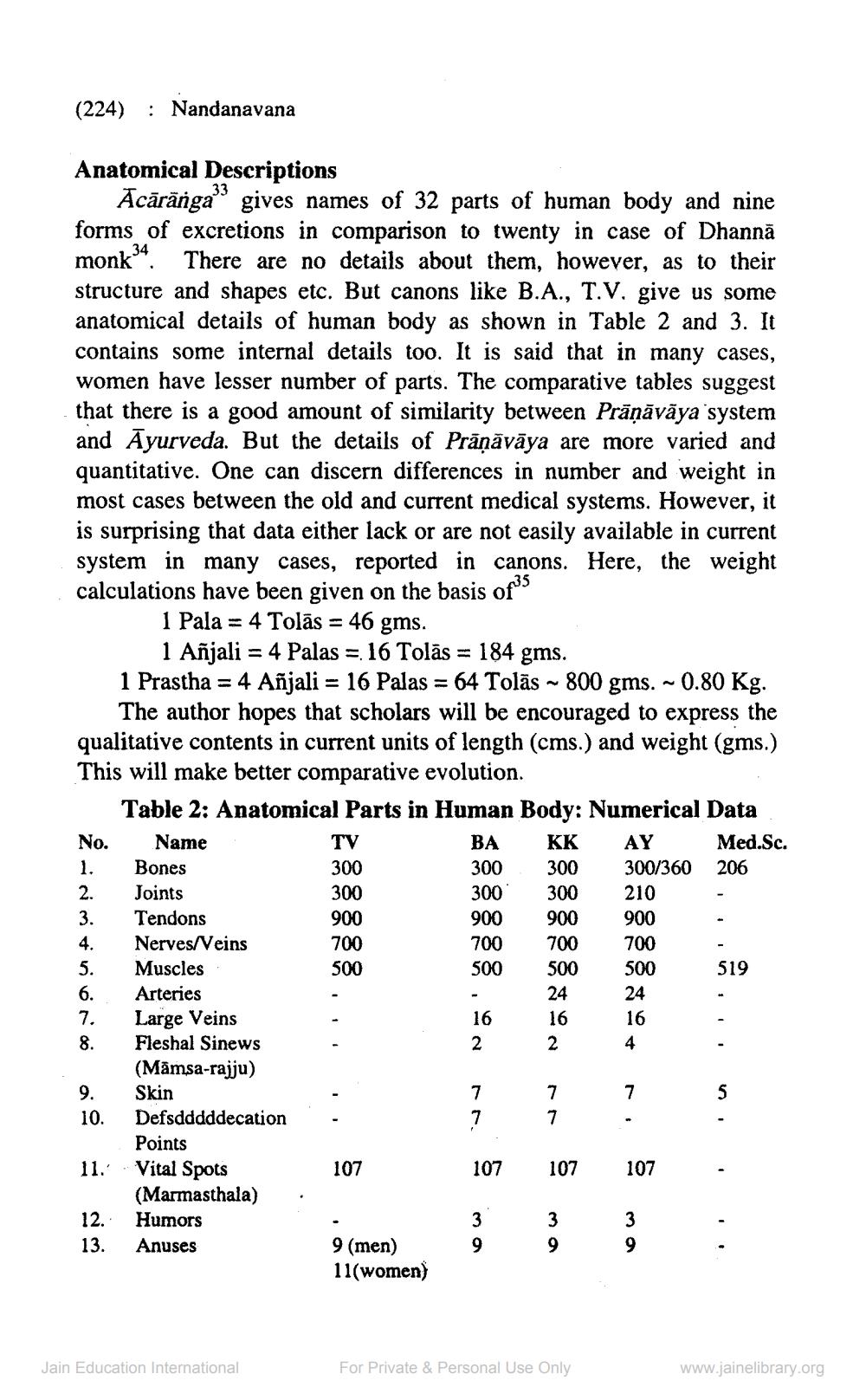________________
(224) : Nandanavana
Anatomical Descriptions
Acaränga3 gives names of 32 parts of human body and nine forms of excretions in comparison to twenty in case of Dhannā monk34. There are no details about them, however, as to their structure and shapes etc. But canons like B.A., T.V. give us some anatomical details of human body as shown in Table 2 and 3. It contains some internal details too. It is said that in many cases, women have lesser number of parts. The comparative tables suggest that there is a good amount of similarity between Präṇāvāya system and Ayurveda. But the details of Praṇāvāya are more varied and quantitative. One can discern differences in number and weight in most cases between the old and current medical systems. However, it is surprising that data either lack or are not easily available in current system in many cases, reported in canons. Here, the weight calculations have been given on the basis of35
1 Pala = 4 Tolās = 46 gms.
16 Palas = 64 Tolās
Añjali = 4 Palas = 16 Tolas = 184 gms. 1 Prastha = 4 Añjali 800 gms.~0.80 Kg. The author hopes that scholars will be encouraged to express the qualitative contents in current units of length (cms.) and weight (gms.) This will make better comparative evolution.
No.
1.
2.
3.
4.
5.
6.
7.
8.
9. 10.
11.
ܡ
12. 13.
33
Bones
Joints
Tendons
Nerves/Veins
Muscles
Arteries
Large Veins
Fleshal Sinews
(Māmsa-rajju)
Skin
Table 2: Anatomical Parts in Human Body: Numerical Data
Name
AY 300/360 206
210
900
700
500
24
16
Defsdddddecation
Points
Vital Spots (Marmasthala) Humors
Anuses
-
Jain Education International
TV
300
300
900
700
500
107
9 (men)
11(women)
BA KK
300 300
300
300
900
700
500
-
16
2
77
107
~
3 a
9
900
700
500
24
16
2
77
107
39
For Private & Personal Use Only
4
7
'
107
39
Med.Sc.
519
5
www.jainelibrary.org




